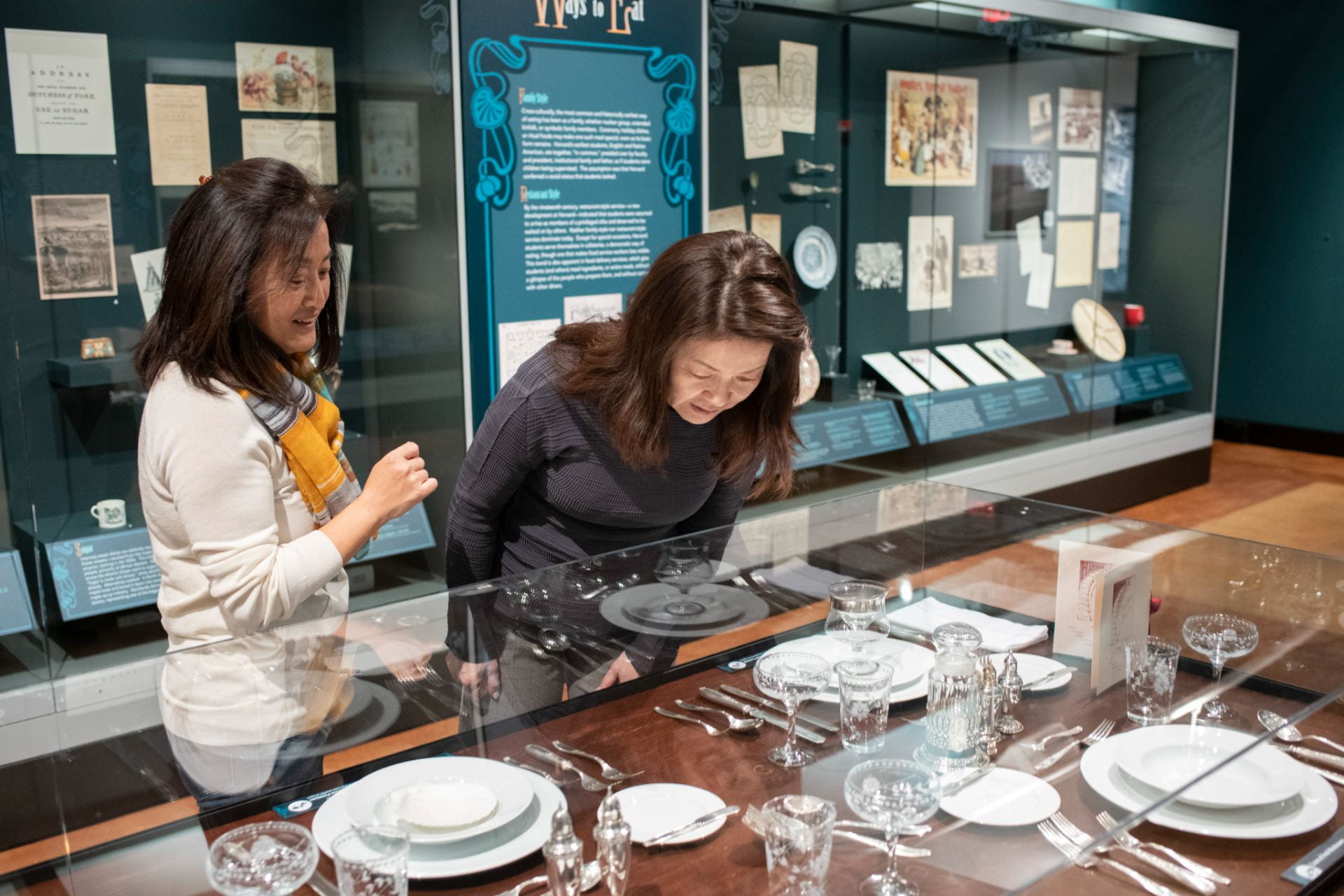The exhibition dives into the mystery and lore behind some of the ocean’s most fascinating creatures
CAMBRIDGE, Mass., June 18, 2024—The idea of sea monsters has captivated us for centuries. The terrifying Kraken, the giant squid in Jules Verne’s Twenty Thousand Leagues Under the Sea—each inspires fear and fascination. The myths and legends have become entangled in our collective psyche. Could there really be something scary lurking down there in the dark depths? Folklore and popular culture say yes, yet science urges us to dive a little deeper.
The new exhibition was inspired by a popular course taught by Peter Girguis, Guest Curator and Harvard Professor of Organismic and Evolutionary Biology. Girguis says that “this course is really a survey of humankind’s relationship with the ocean, from ancient mariners to current political affairs. What’s been most rewarding is seeing the students realize how important the ocean is to humanity and how we often apply monstrosity to things we simply don’t understand.”
Sea monsters are a universal phenomenon, appearing in the myths and legends of cultures around the world. However, many of these exciting stories come from real creatures hidden in the deep. In the exhibition, visitors will ask themselves: do sea monsters exist? And if so, what do they tell us about ourselves and our connection with the ocean?
Ancient mythology depicts the sea as a realm of chaos, filled with fearsome creatures like the Greek Hydra. Hindu mythology conjured the Makara, a sea monster that symbolizes protection and good fortune. In African folklore, creatures like the Mngwa and the Inkanyamba are feared as evil water spirits. However, with modern science and technologies, we better understand the lives of the real creatures behind these legends. For instance, the New England-based Scituate Sea Monster was ultimately identified as a decaying basking shark; the Kraken is likely the enigmatic deep-sea giant squid.
Visitors will discover the existence of sea creatures whose real lives are often more astonishing than the fantastical beings we may have imagined. Visitors can see these creatures firsthand when peering into displays of specimens from the Museum of Comparative Zoology’s extensive collections, such as a viperfish, the tentacle and beak of a giant squid, and a megalodon tooth.
The exhibition features historical illustrations of these fabled monsters and detailed ancient mariners’ maps. Ancient maps held important cultural knowledge, often revealed through depictions of mythological creatures that served as warnings of dangerous and uncharted waters. Also on display is a Peruvian ceramic pot made by the ancient Moche people, which shows a crab with human-like features losing a battle with a god. A two-foot Gregorian reflecting telescope made around 1750, decorated with two sea serpents, also appears in the gallery.
Tentacles and teeth are frequently associated with monsters of the sea. In reality, tentacles are important and adaptable tools used to sense the environment, catch food, and for protection. Surprisingly, the viperfish’s needle-like fangs feel more like toothbrush bristles than daggers. And while the deep-sea anglerfish may look scary, they are just a few inches long and eat only small fish and shrimp. Many of these creatures are captured in eerie and stunning deep-sea photography by Solvin Zankl and others.
The exhibition explores how ocean ecosystems are threatened by creatures such as the crown-of-thorns starfish which feeds on coral polyps and Sargassum seaweed which is growing out of control in some places due to agricultural-nutrient runoff, creating dead zones in the ocean and overwhelming beaches. Even more monstrous than these invaders are the pressures we humans place on the ocean. Plastic pollution and human-influenced climate change are endangering marine life and ecosystems. These are the real sea monsters and the exhibition shows that we have the chance to work toward sustainable solutions that protect our oceans for future generations.
We thank the following partners for contributing objects, specimens, and artwork to the exhibition:
- The Museum of Comparative Zoology, Harvard University & the Ernst Mayr Library
- The Peabody Museum of Archaeology and Ethnology, Harvard University
- The Collection of Historical Scientific Instruments, Harvard University
- The Harvard Map Collection, Harvard University
Sea Monsters: Wonders of Nature and Imagination is open to the public through June 26th, 2026. Visit the adjoining exhibit Swimming with Sharks: A Deep Dive into Shark Biology and Behavior.
About the Harvard Museums of Science & Culture
The HMSC mission is to foster curiosity and a spirit of discovery in visitors of all ages by enhancing public understanding of and appreciation for the natural world, science, and human cultures. HMSC works in concert with Harvard faculty, museum curators, students, and members of the extended Harvard community to provide interdisciplinary exhibitions, events and lectures, and educational programs for students, teachers, and the public. HMSC draws primarily upon the extensive collections of the member museums and the research of their faculty and curators.
History
The Harvard Museums of Science & Culture (HMSC) partnership was established on July 1, 2012, by former Edgerley Family Dean of the Faculty of Arts and Sciences, Michael D. Smith, to develop a strong, coordinated public face for the six research museums that are within the Faculty of Arts and Sciences at Harvard:
See hours and admission rates on each of the HMSC museum websites:
- Collection of Historical Scientific Instruments
- Harvard Museum of Natural History
- Harvard Museum of the Ancient Near East
- Peabody Museum of Archaeology & Ethnology
Press contact:
Bethany Carland-Adams
Public Relations Specialist
Harvard Museums of Science & Culture
617 959 3481
bcarlandadams@hmsc.harvard.edu
